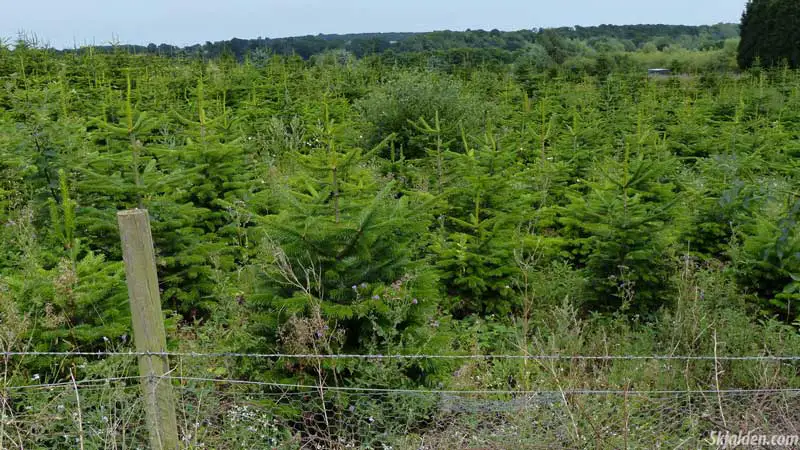As the festive season approaches, one of the central symbols of Christmas—the Christmas tree—becomes the subject of a recurring debate: Are real Christmas trees or artificial ones better for the environment?
While artificial trees offer convenience, a deeper look into their production, use, and disposal reveals that real Christmas trees are not only a more eco-friendly choice but also support sustainable agriculture and local economies. This article explores the benefits of choosing real Christmas trees, underscoring their positive impact on the environment through sustainable farming practices, carbon sequestration, and biodiversity enhancement.
The Growth and Benefits of Real Christmas Trees
Sustainable Cultivation Christmas trees typically require seven to ten years to reach marketable size, depending on species and environmental conditions. This long growth period might seem a point against them, yet it is during these years that the trees provide substantial environmental benefits.
Grown across vast farms, often on land unsuitable for other agricultural purposes, these trees are not just crops but are part of a larger ecosystem. Farmers engage in sustainable planting practices, ensuring that for every tree cut, one to three seedlings are planted the following spring. This practice not only maintains the population of trees but also ensures ongoing carbon absorption, soil stabilization, and biodiversity.
Carbon Sequestration and Air Quality Throughout their life cycle, Christmas trees absorb carbon dioxide—a significant greenhouse gas—thus contributing positively to the fight against climate change. An acre of Christmas trees can consume the annual CO2 emissions of two average cars. Moreover, these trees contribute to air quality by releasing oxygen and filtering out air pollutants, providing a much-needed natural remedy to air pollution.
Economic and Community Impact The cultivation of real Christmas trees supports local farmers and economies, particularly in rural areas where alternative employment opportunities may be scarce. The seasonal nature of this market also provides jobs not only in agriculture but in retail and distribution, integrating multiple sectors into the holiday spirit.
Comparing Environmental Impacts
Real Trees vs. Artificial Trees While real trees offer a slew of environmental benefits during their life cycle, artificial trees present a different story. Typically made from plastics and metals, artificial trees are produced through processes that emit large quantities of carbon dioxide and potentially toxic by-products. Moreover, these trees are non-biodegradable and largely non-recyclable, meaning that once disposed of, they linger in landfills for centuries.
Lifecycle Analysis To truly gauge the environmental impact, one must consider the entire lifecycle. Real trees, once their festive duty concludes, can be mulched or composted, returning to the earth and enriching the soil. In contrast, artificial trees, with a life expectancy of six to ten years, end up in landfills, where their decomposition is not just slow but also environmentally costly.
Local Sourcing and Global Benefits
Choosing Locally Sourced Trees Opting for a locally sourced real Christmas tree minimizes transportation emissions, further tipping the environmental scales in their favor. Local sourcing supports not just local farmers but also reduces the carbon footprint associated with the long-distance transportation of artificial trees, often manufactured and shipped from overseas.
Biodiversity and Land Use Real Christmas trees contribute to biodiversity. Tree farms are habitats for various wildlife species, including birds, insects, and mammals, playing a crucial role in maintaining ecological balance. These farms also help in soil conservation, preventing erosion, and improving water retention, which are vital for sustainable land management.
Final Thoughts
Choosing between real and artificial Christmas trees isn’t just a matter of tradition or convenience but a significant environmental decision. Real Christmas trees emerge as the superior choice, not only for their direct environmental benefits, such as carbon sequestration and support for biodiversity but also for their role in boosting local economies and promoting sustainable agriculture practices.
By choosing a real tree, consumers actively contribute to a more sustainable holiday celebration and a greener planet. As we continue to navigate the complexities of environmental conservation, supporting practices that offer tangible benefits to the earth and its inhabitants remains crucial. This Christmas, consider not just the aesthetic but the legacy your tree choice leaves behind.
Image credit: N Chadwick
